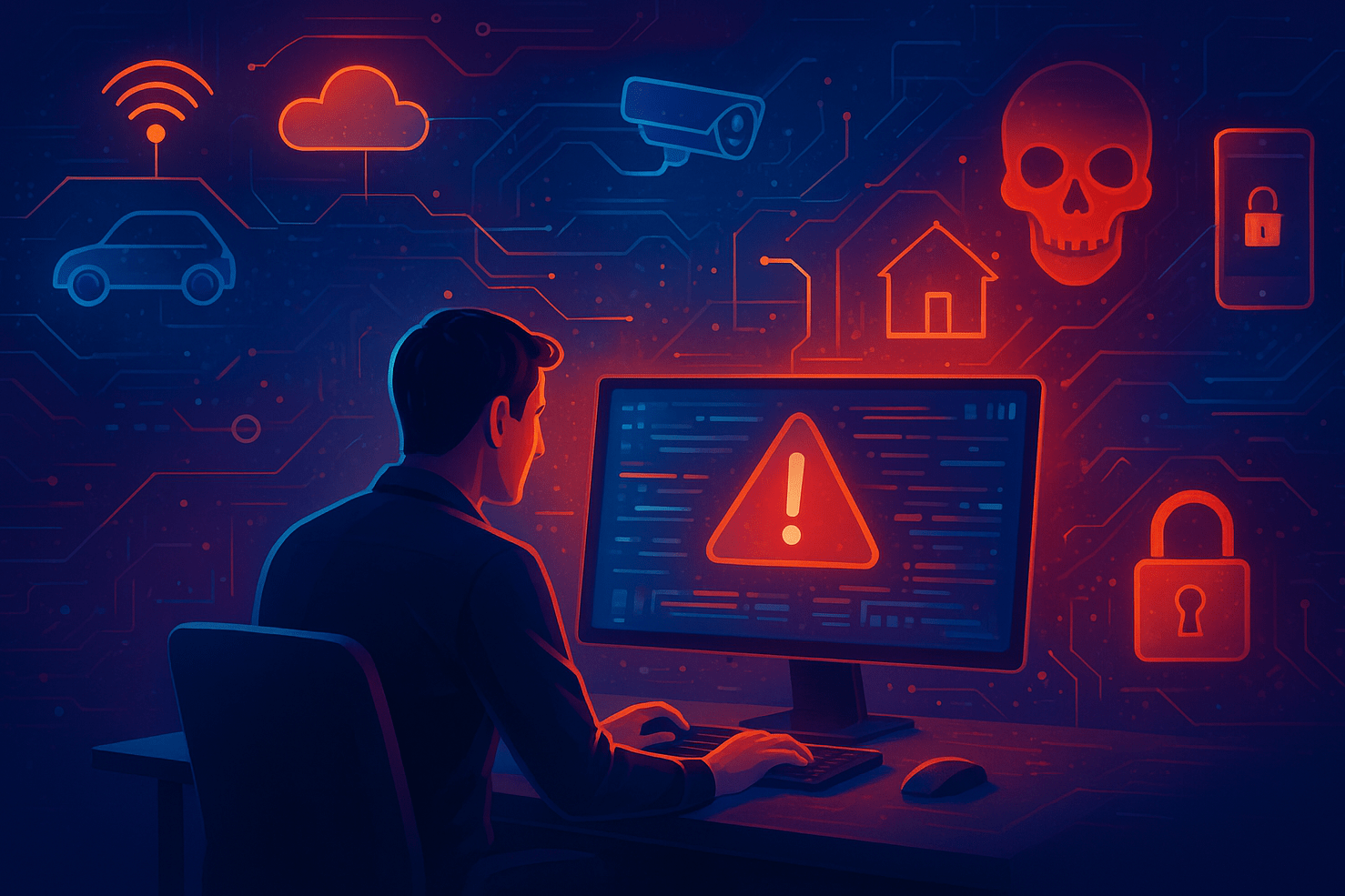21 November 2025
The Growing Security Challenges of IoT in Modern Digital Ecosystems
As the world moves deeper into the era of hyper-connectivity, the Internet of Things (IoT) has become one of the most transformative technologies across industries. From smart home devices and connected vehicles to industrial sensors and healthcare monitoring systems, IoT is reshaping how data is collected, processed, and utilized. However, the rapid expansion of connected devices also introduces complex security challenges. For operators, enterprises, and governments, securing IoT infrastructures has become a critical priority—one that demands both technological advancement and strategic collaboration.
1. The Expanding Attack Surface
Unlike traditional IT systems, IoT ecosystems consist of millions of distributed devices with varying capabilities, configurations, and security standards. Each connected node becomes a potential entry point for attackers.
Many IoT devices are designed with lightweight hardware, limited computing power, and minimal built-in security. This makes them more vulnerable to brute-force attacks, exploitation of firmware vulnerabilities, and unauthorized access. As the number of IoT devices continues to grow, the attack surface expands exponentially, increasing the risk of large-scale breaches.
2. Weak Authentication and Default Credentials
One of the most common security gaps in IoT is the continued use of default or weak passwords. Many devices are deployed without proper credential updates or secure onboarding procedures. Attackers often scan networks to identify devices with factory-set logins, allowing them to compromise entire systems with minimal effort.
For operators, this creates operational risks such as device takeover, eavesdropping, and unauthorized configuration changes. Strong authentication, certificate-based identities, and secure boot processes are essential to reducing these vulnerabilities.
3. Limited Device Visibility and Monitoring
IoT environments often involve a mix of legacy sensors, consumer-grade devices, and newly deployed smart components. Because these devices are deployed across diverse networks—sometimes in remote or unmanaged locations—operators often lack full visibility into their behavior and status.
Limited monitoring makes it difficult to detect anomalous behavior, suspicious traffic, or early signs of cyberattacks. Without centralized IoT security management, threats can go unnoticed until they cause significant disruption, such as network overloads, data exfiltration, or device malfunction.
4. Vulnerable Firmware and Delayed Updates
Firmware represents the core operating layer of IoT hardware. When firmware is outdated or unpatched, devices become exposed to known vulnerabilities that attackers can easily exploit. Yet many IoT devices lack automatic update capabilities or rely on complex manual processes, causing security patches to be delayed or entirely neglected.
This issue becomes critical in sectors like healthcare, manufacturing, and energy, where legacy IoT devices may remain operational for years. Ensuring a secure and consistent firmware update mechanism is one of the biggest challenges in protecting IoT infrastructures.
5. Data Privacy Risks Across Connected Devices
IoT devices collect sensitive information ranging from location data and usage patterns to biometric details. When data transmission is not encrypted or properly authenticated, it becomes vulnerable to interception and manipulation.
Privacy breaches not only impact individuals but also compromise organizations’ compliance with global data protection regulations. Operators must ensure secure data flows through end-to-end encryption, robust access control, and reliable key management.
6. Potential for Large-Scale Distributed Attacks
Compromised IoT devices can be weaponized to launch distributed denial-of-service (DDoS) attacks, malware propagation, or botnet operations. Historical incidents have shown how even simple IoT devices—such as webcams or home routers—can be hijacked and used to disrupt major online services.
As IoT adoption accelerates, these risks become more severe. The possibility of millions of unsecured devices being mobilized for cyberattacks underscores the importance of proactive IoT security strategies.
7. Security Gaps in Supply Chain and Manufacturing
IoT devices pass through complex global supply chains before reaching end users. Each stage—from component manufacturing to software integration—can introduce hidden vulnerabilities. Counterfeit components, malicious firmware injections, and compromised development environments are among the risks that can silently affect device security.
Operators and enterprises need greater visibility into device provenance and supply chain integrity. Zero-trust frameworks, supply chain audits, and vendor security certifications play an increasingly important role in minimizing these risks.
8. Lack of Standardization Across the Ecosystem
The IoT landscape consists of countless manufacturers, platforms, and communication protocols. This diversity creates interoperability challenges and makes it difficult to enforce consistent security standards.
While industry bodies continue developing frameworks for IoT security, adoption remains uneven. As a result, organizations often struggle to maintain uniform policy enforcement across their device fleets. Standardization is essential for creating a cohesive and secure IoT ecosystem.
9. The Need for AI-Driven Protection
With the volume of IoT data and devices growing rapidly, traditional security methods are no longer sufficient. Operators are increasingly turning to artificial intelligence (AI) and machine learning to enhance threat detection, automate anomaly monitoring, and reduce response times.
AI-powered security solutions can analyze vast streams of IoT traffic, identify abnormal patterns, and respond proactively—making them indispensable in defending large-scale IoT environments.
10. Strengthening IoT Security Through Collaboration
IoT security cannot be addressed by a single stakeholder. Operators, device manufacturers, software providers, and regulators must collaborate to build a secure digital future. This includes establishing industry-wide security guidelines, building secure-by-design devices, and promoting user awareness.
Education and training also play an important role in helping organizations deploy IoT technologies safely.
As IoT continues to transform industries and everyday life, its security challenges become more urgent and complex. Weak authentication, outdated firmware, supply chain vulnerabilities, and lack of standardization are among the key issues shaping today’s IoT risk landscape.
For operators and organizations, investing in robust IoT security strategies is no longer optional—it is essential for maintaining trust, safeguarding data, and ensuring reliable operations in an increasingly connected world. By combining strong security practices with AI-driven intelligence and cross-industry collaboration, businesses can unlock the full potential of IoT while minimizing the risks that come with rapid digital transformation.
Is this information helpful?
